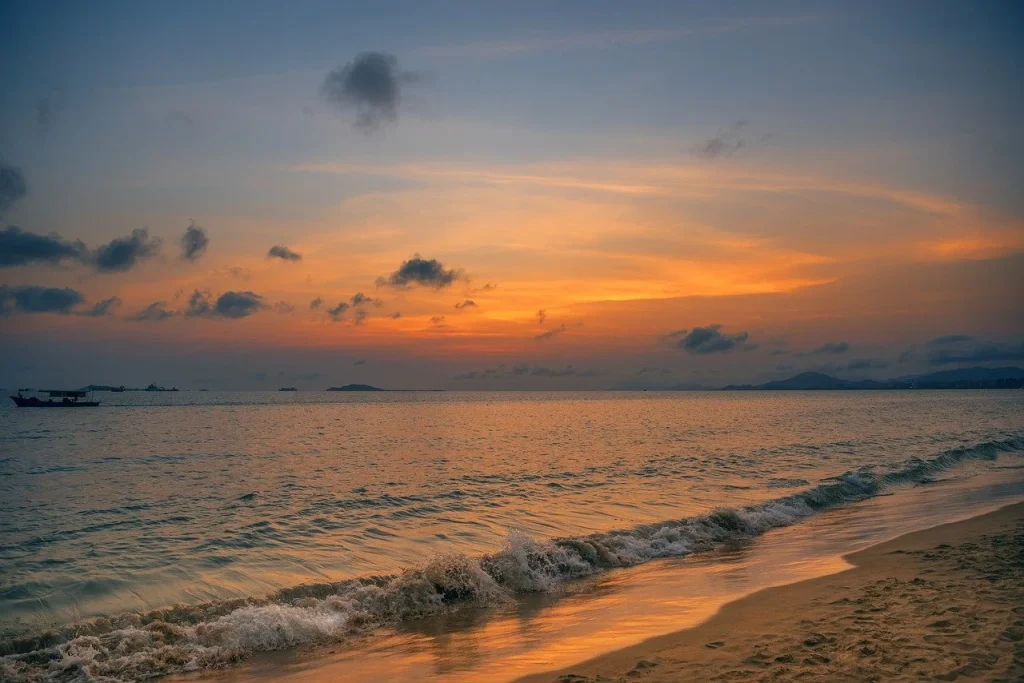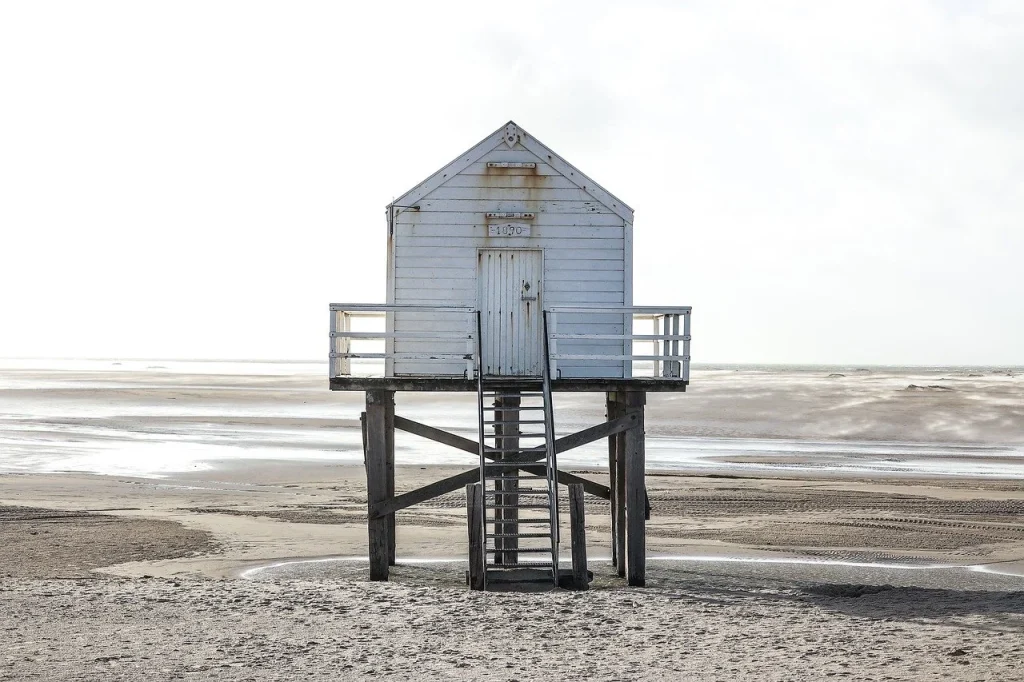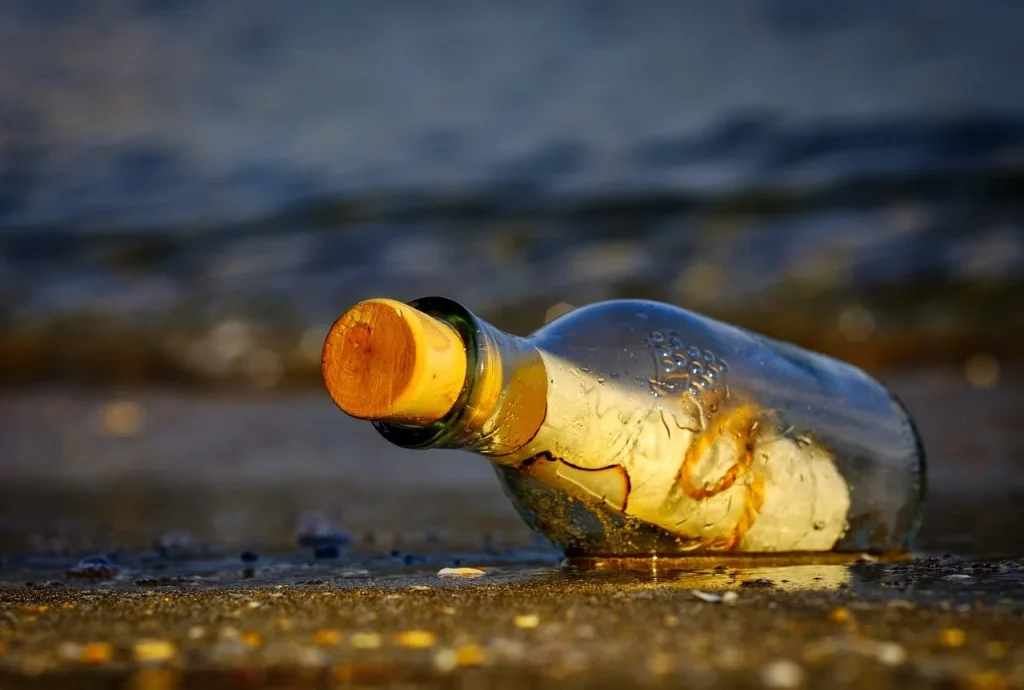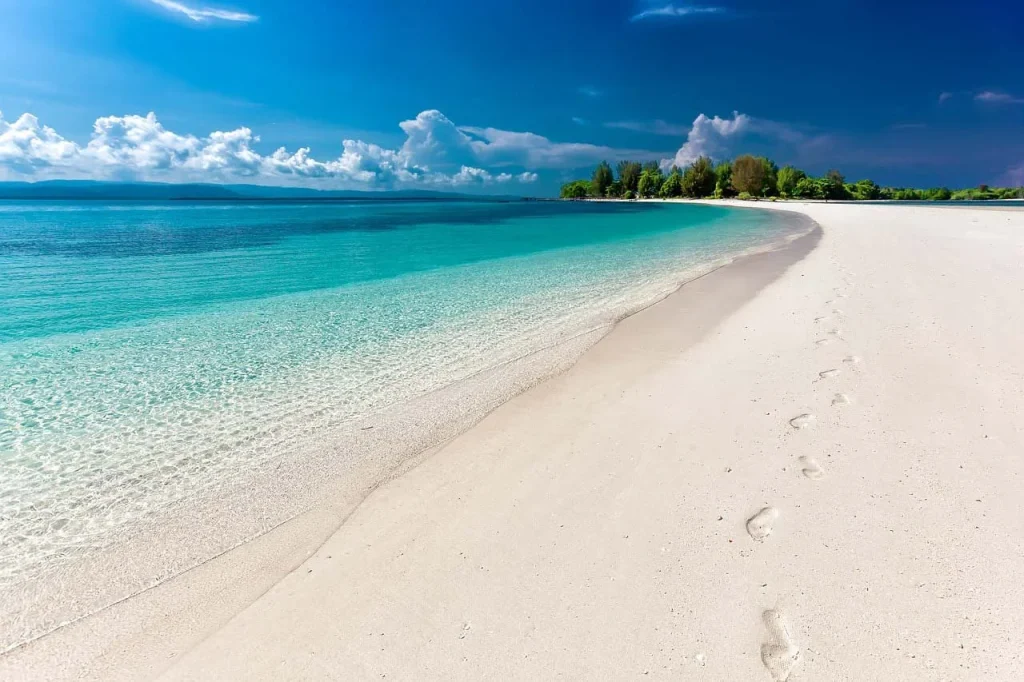There’s nothing quite like a day at the beach, right? The sun on your face, the breeze in your hair, and occasionally, a seagull trying to make off with your snacks.
But beaches offer more than just relaxation and occasional wildlife theft. They are fascinating ecosystems with stories and secrets as deep as the ocean itself. From the sands that travel continents to the wildlife that calls it home, every beach has a tale.
Ready to explore some incredible facts that will make you the smartest sunbather on the shore? Let’s start our journey.
To escape and sit quietly on the beach – that’s my idea of paradise.
Emilia Wickstead
Beach Facts
Let’s dive into the fascinating world of beaches to arm ourselves with knowledge! Make sure to read each detail carefully, because at the end of this article, a quiz awaits to test your expertise on all things beach-related.
- The sand on Whitehaven Beach in Australia is so pure that it can be used to polish jewelry.
- There’s a phenomenon called “singing sands”, which occurs when sand grains make a sound due to the wind or walking.
- Beach sands can vary in color from pink to black, depending on the mineral composition and volcanic activity in the area.
- Hyams Beach in New South Wales, Australia, holds a Guinness World Record for having the whitest sand in the world.
- Some shorelines glow at night due to bioluminescent organisms in the waves, especially in the Maldives.
- Sea foam isn’t just seawater churned up; it contains organic matter from decaying marine organisms.
- Coconuts can travel across oceans and sprout on new shores, effectively planting themselves.
- The longest stretch of continuous sand is Praia do Cassino in Brazil, spanning roughly 150 miles.
- Green sand is found on beaches with high olivine content, such as Papakōlea Beach in Hawaii.
- Wave patterns are heavily influenced by the topography of the seafloor leading up to the shoreline.
- The tidal range in the Bay of Fundy is one of the highest, sometimes exceeding 50 feet between high and low tide.
- Driftwood provides essential shelter and habitat for birds, insects, and small animals when it washes ashore.
- Beach nourishment, the process of adding sand to coastlines, helps combat erosion but can disrupt local ecosystems.

- Barrier islands protect the mainland from severe weather impacts and are dynamic, constantly changing shapes.
- The Great Barrier Reef off the coast of Australia is the world’s largest coral reef system and is visible from space.
- Parrotfish are crucial to sand production; they eat coral and excrete it as sand after digestion.
- Mangrove trees, found near many tropical shorelines, are vital for preventing soil erosion and maintaining water clarity.
- The term “maritime forest” describes wooded areas close to the shore that influence the ecological balance of coastal environments.
- Tides are influenced by the gravitational pull of the moon and the sun, which affects how far the waves come onto the shore.
- The “wrack line” is a line of organic material left on the shore by high tide, crucial for the beach ecosystem.
- Hidden beneath some shorelines are layers of peat, which are ancient deposits of decayed plant material.
- Deadman’s Bay in Newfoundland got its name because it was a common dumping ground for bodies washed up from shipwrecks.
- The world’s oldest known message in a bottle was found on an Australian shoreline, 132 years after being thrown into the sea.
- At some beaches, you can find glass stones, polished over decades by the abrasive action of the ocean.
- Over 2000 species of plants and animals might inhabit just one rock pool on a coastal shoreline.
- Sea turtles use beaches for nesting and rely on the magnetic field of the earth to find their way back to the same spot.
- Storm surges are sudden increases in sea level caused by intense storms pushing water towards the shore.
- More than half of the world’s seagrass beds, crucial for carbon sequestration, are found in shallow coastal waters.

- Every year, about a billion tons of Saharan dust fertilize Amazon rainforests and build Caribbean beaches.
- Some shorelines are known for their therapeutic properties, containing minerals and clays used in health treatments.
- Sharks may come closer to shore during warmer months to pursue schools of fish that gather there.
- The Arctic and Antarctic coasts, although often ice-covered, host a diverse range of adapted wildlife.
- Ghost crabs burrow in the sand, making them a common yet elusive sight on sandy stretches.
- Coral bleaching affects reefs globally due to rising sea temperatures and has a direct impact on beach ecosystems.
- Tide pools can withstand drastic environmental changes, from baking heat to pounding waves, harboring resilient organisms.
- Stiltsville, a group of wood stilt houses located one mile south of Cape Florida, stands directly in the shallow waters of Biscayne Bay.
- Icebergs that wash ashore on black volcanic sand in Iceland create a striking contrast known as “diamond beach”.
- Fishing cats, a type of wild cat, are among the few felines that seek out water and are excellent swimmers.

- In some areas, laws exist that allow public access to all coastal areas, regardless of private property rights.
- Sandbanks and tide shifts can expose ancient forest stumps, which have been preserved under sediment for thousands of years.
- Hermit crabs rely on discarded seashells for their homes, creating competition for the best shells.
- Microplastics have become a common but hazardous component of sand, posing risks to marine and human health.
- The disintegration of lava during volcanic eruptions can create beaches almost instantaneously.
- Shorebirds often migrate thousands of miles and use coastal areas as stopover points to rest and refuel.
- Pfeiffer Beach in California features purple sand, derived from manganese garnet deposits in the surrounding rocks.
- In medieval times, shipwrecks were considered an opportunity for local communities to salvage goods washed ashore.
- Dune systems act as natural barriers against sea level rise and storm surges, absorbing the impact of ocean energy.
- Biodegradable beach toys are emerging as an eco-friendly alternative, helping reduce plastic waste on coastal frontiers.
- Sand dunes are not only beautiful but also act as crucial habitats for various endemic species.
- Coastal sand dunes can sing or boom when dry sand grains slide over each other, a rare phenomenon observed in only about 30 places worldwide.
Beach Myths

Now that we’ve explored the beautiful stories of our beaches, let’s dive into the next part of our journey—separating truth from myth. Get ready to challenge what you think you know!
- Sharks Frequently Attack Humans at Beaches
It is widely believed that sharks often attack humans, yet, in reality, such attacks are exceptionally rare. Humans are not preferred prey for sharks, and most bites are attributed to sharks mistaking humans for other animals. - You Can’t Get Sunburned on Cloudy Days
Despite the overcast skies, sunburn can still occur. The sun’s ultraviolet rays can penetrate through the clouds, making it essential for sunscreen to be applied even on cloudy days at the beach. - Jellyfish Stings Can Be Treated with Urine
Contrary to popular belief, urine is not an effective treatment for jellyfish stings. In fact, it can aggravate the stinging cells further. Vinegar or salt water should be used instead to manage these injuries. - Salt Water Heals Wounds
It is often claimed that salt water has healing properties for wounds. However, ocean water contains bacteria and other pathogens that can infect open cuts or scrapes. It is advised that wounds be kept clean and dry unless otherwise directed by healthcare professionals. - Alcohol Keeps You Warm at the Beach
Many believe that drinking alcohol can help maintain warmth in cold beach environments. In truth, alcohol lowers the body’s core temperature and can lead to hypothermia being experienced more rapidly, especially in windy or wet conditions.
No products found.
Beach Quotes

Below, you will find some of my favorite quotes about beaches. Feel free to add yours in the comment section so I can add them to the list as well.
The ocean stirs the heart, inspires the imagination and brings eternal joy to the soul.
Robert Wyland
Known for his massive marine life murals, artist Robert Wyland eloquently expresses the profound emotional and inspirational impact of the ocean.
At the beach, life is different. Time doesn’t move hour to hour but mood to moment. We live by the currents, plan by the tides, and follow the sun.
Sandy Gingras
Writer Sandy Gingras beautifully sums up the relaxed and spontaneous rhythm of life at the beach.
The sea, once it casts its spell, holds one in its net of wonder forever.
Jacques Cousteau
Legendary oceanographer Jacques Cousteau reflects on the captivating and everlasting allure of the sea.
In one drop of water are found all the secrets of all the oceans.
Kahlil Gibran
Poet and philosopher Kahlil Gibran uses this poetic expression to signify the depth and mystery contained within even the smallest part of the ocean.
I honestly think the beach is the only place children actually entertain themselves.
Donna McLavy
Donna McLavy humorously notes the beach’s unique ability to engage and captivate children, freeing parents from the need to constantly entertain.
Beach FAQ

We’ve enjoyed all these quotes, and we continue to the FAQ section. Read carefully because the quiz is just ahead. Don’t disappoint me.
- Why are beaches important?
They are vital for numerous reasons: they provide habitat for diverse marine life, protect coastlines from erosion, and serve as key recreational sites for humans. They also play a significant role in the local economy, often driving tourism and associated businesses. - Are beaches public property?
The ownership of beaches can vary by location. In many countries, beaches are considered public property and are accessible to everyone. However, some beaches may be privately owned or have restricted access, depending on local laws and regulations. - Are beaches man-made?
While most of them are naturally occurring, some are man-made. Man-made ones are often created for recreational purposes in areas where natural beaches are not available, using imported sand to simulate a natural environment. - How do beaches form?
They form through the accumulation of sediment along the shoreline, primarily sand or pebbles. This sediment is typically brought by rivers or eroded from nearby cliffs and is then shaped by the action of waves, tides, and currents. - Can beaches disappear?
Yes, they can disappear due to factors like rising sea levels, stronger storms, and human activities that lead to erosion. Conservation efforts are crucial to protecting and restoring beaches.
No products found.
Beach Trivia

Are you ready to test your beach knowledge? Dive into our quiz, but beware: score zero, and you might just find your next beach day includes an involuntary sandcastle hat!
Beach Merch
If you are a true fan of beaches, then you definitely need to check out our merchandise. You can find T-shirts, hoodies, mugs, and tote bags for your favorite designs. Feel free to check out all the other designs in our shop.
Conclusion
As we wrap up our exploration, it’s clear that beaches are more than just stretches of sand by the sea. They are dynamic landscapes, rich in biodiversity, and vital to both marine and human life.
From their role in protecting coastlines from erosion to providing a habitat for numerous species, beaches play a crucial part in our natural world. Next time you visit, take a moment to appreciate the wonders of this coastal treasure. Till next time, stay curious and explore more. Cheers.


